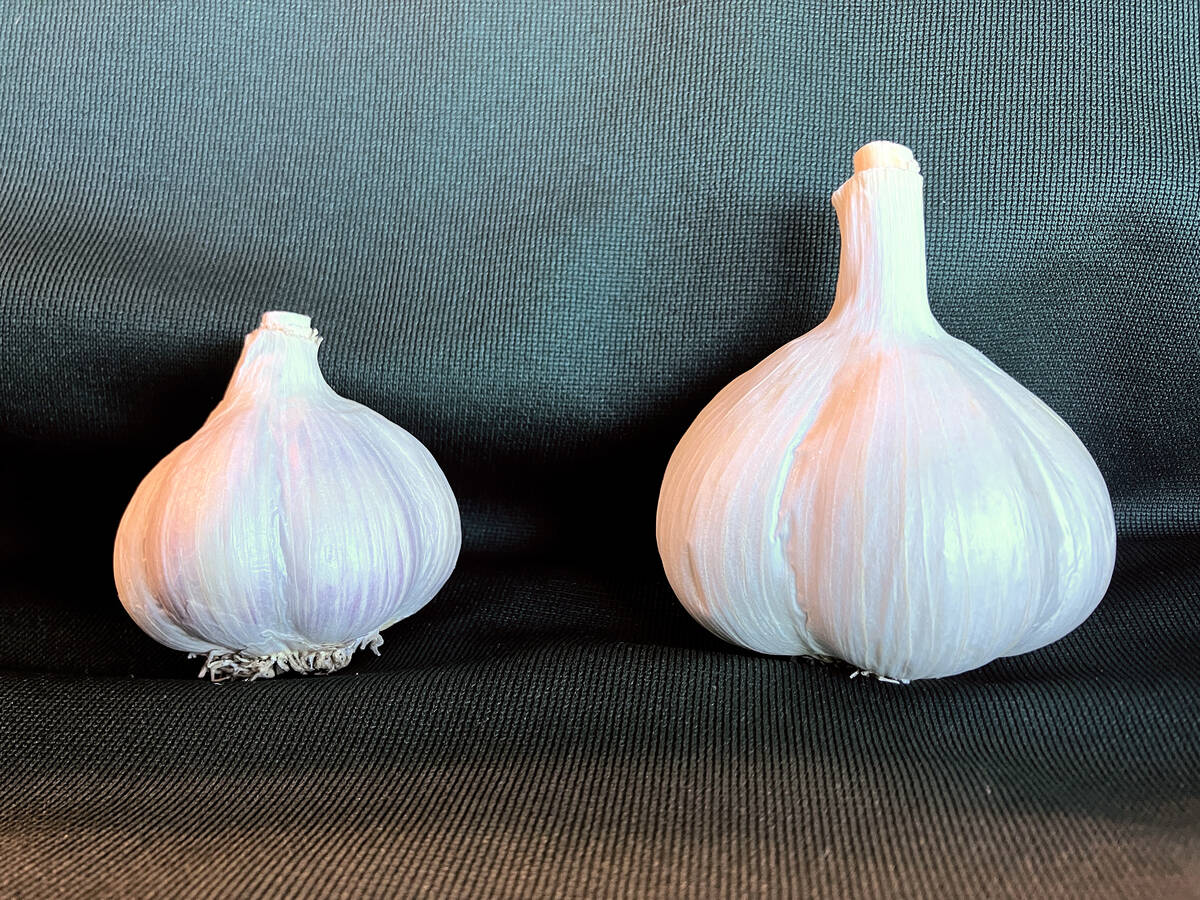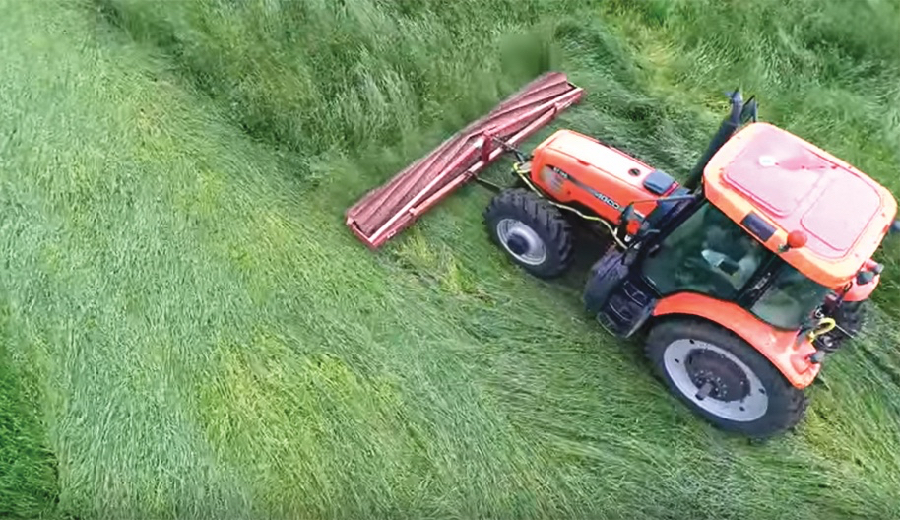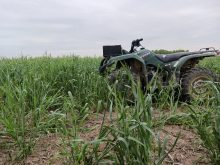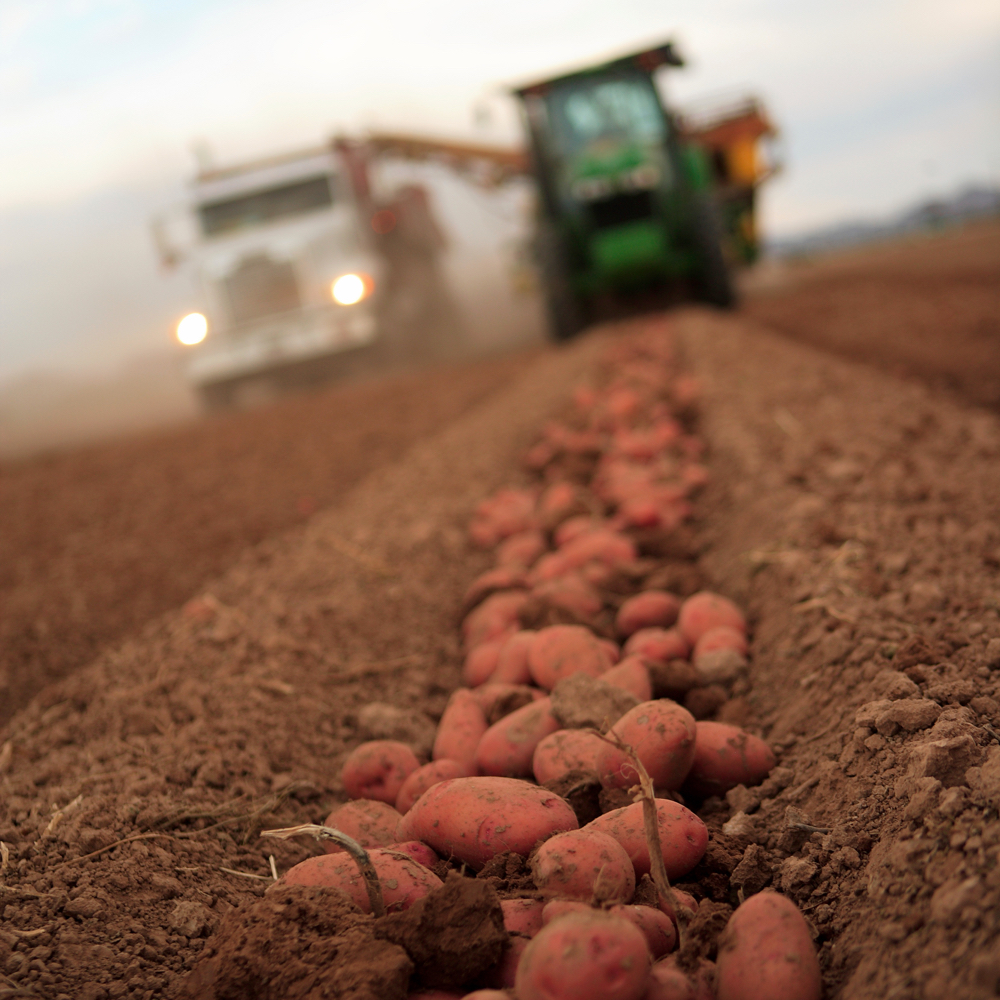Planting soybeans into a just-terminated cover crop of winter rye is gaining popularity among Ontario’s organic community, as farmers strive to introduce minimum-till strategies into their rotations.
No-till planting has so far not become common in any other crops under organic production — in which farmers typically rely upon tillage instead of chemical inputs to manage weeds — but, as attendees at the recent 38th annual Guelph Organic Conference learned, several growers have been successful with soybeans planted into cereal rye (or triticale).
Why it matters: No-till options not only provide the potential to mitigate soil erosion for organic growers, but also to decrease fuel use.
Read Also

Clean seed garlic promises bigger bulbs and higher returns for growers
Ontario garlic trials show clean seed outshines conventional yields, with stronger drought resilience, reduced virus risk and greater economic outcomes.
Morris Van De Walle is among Ontario’s pioneers in organic cover crops and no-till. In what continues to be a learning process for the cash cropper who operates about 500 acres northwest of St. Marys, innovations have included planting black turtle beans into a winter-killed rye/clover cover crop that was inter-seeded into standing corn at the time of the last inter-row scuffling.
But, as University of Guelph Plant Agriculture Professor Ralph Martin noted Van De Walle’s most significant success has been roller-crimping fall-planted rye at the pollen stage, in time to plant no-till soybeans into the resulting thick hatch of organic matter.
Martin included a slide in his presentation showing the taller-than-six-feet Van De Walle standing in a rye crop in early spring, holding his hands in the air. Only his hands are visible.
The rye is typically planted after wheat harvest. Van De Walle modified a conventional crop roller by welding on metal strips in a “chevron” pattern that serves to crimp the rye rather than break it off completely. Ideally, that means the rye won’t regrow — although some regrowth is inevitable.
The drawbacks of a winter rye cover crop include a high uptake of nutrients, and preventing the soil from warming up quickly due to the thick cover of stalks. That’s why the strategy hasn’t gained a foothold in organic corn production.
But the benefits, at least under Van De Walle’s management, have proved significant when it comes to soys. Weed suppression is impressive. And, if the farmer is fortunate enough to receive rainfall in the first few days after soybean planting, the dying cover crop conserves moisture by limiting run-off and evaporation.
Also among the presenters at the recent Organic Conference were upstate New York farmers Mary-Howell and Klaas Martens. The Martens also no-till soys into a roller-crimped cover crop of fall-planted rye (along with Austrian white peas), and they described the practice as part of a larger strategy of introducing biological diversity into their growing system.
As with Van De Walle, the cover crop is seeded following the harvest of a winter cereal.
The Martens gained a new perspective on minimum-till agriculture during a recent visit to Europe. Contrasting to a common North America belief that no-till can serve to fix some significant soil problems, Klaas spoke of European organic farmers who understand that you need to tackle your soil problems first by addressing such factors as crop rotation, drainage and soil inputs. Only then should no-till be introduced as a way to prevent future problems from developing or resurfacing.
“In Europe, they believe that you have to earn your right to be able to organic no-till. If the soil is not well-aggregated, you will quite likely run into problems if you try no-till (in organic production).”
Martin agreed. “We have to be cautious about everybody jumping into organic no-till. There are lots of things that can go wrong. But Morris has been doing a lot of that trial-and-error work.”
The University of Guelph professor related a conversation with Van De Walle, who said he “was worried about thistles” before he began his rye/soybean practice. “He said you’ve got to get your perennial weeds under control before you seriously go into this.”
Variations on the rye cover crop theme were mentioned during the two sessions. With both the Martens and Van De Walle, the roller-crimper is mounted on the front of the tractor and is typically used during the same pass as the soybean planting. But rye maturity is a key and the crimping should take place at the pollen stage. And for farmers in heat unit regions in which fall-planted rye hasn’t yet reached pollination when it’s time to plant soybeans, that might be too late.
One Hanover-area grower in the audience explained he plants into a still-standing cover crop of winter triticale, then crimps it later. The Martens, meanwhile, reported Wisconsin growers using the same strategy with winter rye.
The Martens have enough years of experience with the practice to know, though, that if there’s no rain soon after soybean planting, it could be a disaster. So in 2018, with the late spring forecast showing little or no rainfall, they decided to take off much of their rye as forage ahead of the pollen stage instead of crimping it. Then they no-tilled into the stubble.
Active for many years hosting agronomic trials for the Pennsylvania-based, organic-specializing Rodale Institute, they kept a crimped strip to be able to compare the results. Their decision proved to be the right one; there was a three-bushel-per-acre drop in soybean yield on the crimped strip compared to the areas from which the rye was harvested as forage.















